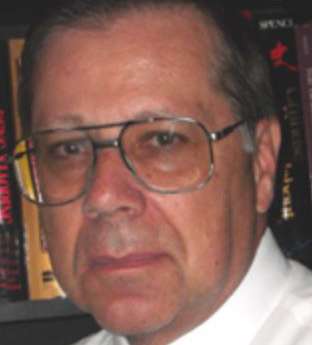
By JOHN RICHARD SCHROCK
“Dad? Did those early horseless carriages have big gas tanks?” I asked. I was about seven years old and sitting in the front seat of our old Packard car in the early 1950s. It was a really neat big car that my dad could drive down the road with one finger on the steering wheel, the camber of the road curves making driving easy. We were at a gas station and Dad was still in the driver’s seat because at that time, we didn’t fill our gas tanks ourselves. And if I remember right, gas was about 29 cents a gallon. But then some candy bars were 5 cents, a Coke in a glass bottle sitting in a cold water chest was 10 cents, and a new car was only two thousands dollars.
Dad didn’t know. His childhood didn’t go back that far. But he of course asked his little boy, “Why do you ask?”
“Well,” I replied, “When they switched from horses to cars using gas, why would you buy a car if there were no gas stations, and why would you build a gas station if there were no cars? So I figure cars must have had big gas tanks when they started.”
“Sounds like a chicken-and-egg thing,” he replied after paying for the gas and we headed down the road.
“I bet the first cars were city folks,” I continued. “That way there might soon be enough for a gas station. And they would be close to it. And the city streets might be better to drive on. Bet the country roads weren’t good like today.”
Dad worked in summers for a road construction company, driving a truck that first held asphalt but soon would haul dry concrete, sand and gravel for mixing on site to build the Eisenhower interstate system.
“Yep,” he said. “The roads in towns were better than in the country back then.” He could remember in his childhood that some rural folks were the last to give up driving horse-and-wagon. And rural roads often had lots of ruts.
A few years later, by the time I was to fifth grade, Dad bought a three-shelf-feet set of bound “Scribner’s Magazine” at a yard sale and brought it home to his son who asked too many questions. Because I finished my assignments early, my teachers always sent me to the back of the room to read through the World Book encyclopedia. Now at home, I had a wonderful set of articles to go through, page-by-page, that chronicled most of the last of the 1800s.
After the Civil War, we had shifted to metal ships in our Navy. Our first submarines were shooting torpedoes that trailed two electric lines and the submarine could control the torpedo going left or right with those lines. And the difference between city streets and rural roads was obvious. It took years to evolve into what we see today.
Today, we are undergoing another change in transportation power, not from horse-muscle-to-gasoline but from gasoline-to-electric (and perhaps some hydrogen). It was interesting to detect the early nay-saying in the Scribner’s articles. To some extent this is being repeated today by gasoline addicts who find a hundred reasons to question today’s transition. But our charging stations are being built faster. And “gas stations” are increasingly expanding into small convenience stores with high prices.
As I walked the streets of Hangzhou, China in 2019, where they eliminated gas-powered motorcycles (as they have in many Chinese cities) and have an increasing number of electric cars and buses, the quietness of Hangzhou city is a pleasant surprise. And that brings up another question for which there are no survivors to answer: “Was the switch from clopping horse-and-buggies to the loud engines of the new horseless carriages as disturbing as I suspect?” No one alive today can answer that, and I didn’t find it in Scribner’s Magazine either.
For those unhappy with the change underway, there is little to do but wait, watch and listen. As they said long ago, “Just hold your horses!”
. . .
John Richard Schrock has trained biology teachers for more than 30 years in Kansas. He also has lectured at 27 universities during 20 trips to China. He holds the distinction of “Faculty Emeritus” at Emporia State University.





